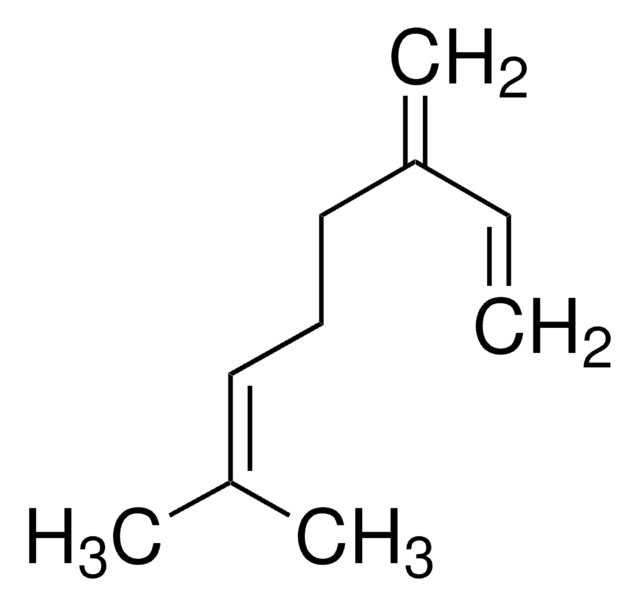G1006621
GC Analysis of Terpenes in Cannabis on Equity-1 after Headspace SPME using 50/30 μm DVB/CAR/PDMS Fiber
suitable for GC/MS, suitable for solid phase microextraction (SPME)
About This Item
Empfohlene Produkte
Methode(n)
GC/MS: suitable
solid phase microextraction (SPME): suitable
Testparameter
sample/matrix: 0.5 g dried cannabis in 10 mL headspace vial
SPME fiber: Divinylbenzene/Carboxen/Polydimethylsiloxane (DVB/CAR/PDMS), 50/30 μm (57298-U)
extraction: 20 min, headspace, 40 °C
desorption process: 3 min, 270 °C
sample preparation: 30 min equilibration at 40 °C prior to extraction
sample preparation: fiber postbake after extraction, 3 min at 270 °C
column: Equity-1, 60 m x 0.25 mm I.D., 0.25 μm (28047-U)
oven: 60 °C (2 min), 5 °C/min to 275 °C (5 min)
inj. temp.: 270 °C
detector: MSD
MSD interface: 300 °C
carrier gas: helium, 1 mL/min constant flow
liner: 0.75 mm ID, SPME
Anwendung(en)
food and beverages
vitamins, nutraceuticals, and natural products
Hinweis zur Analyse
Rechtliche Hinweise
Analyt
Analytische Säule
SPME-Faser
Standard
Zubehör
Hier finden Sie alle aktuellen Versionen:
Analysenzertifikate (COA)
Leider sind derzeit keine COAs für dieses Produkt online verfügbar.
Wenn Sie Hilfe benötigen, wenden Sie sich bitte an Kundensupport
Besitzen Sie dieses Produkt bereits?
In der Dokumentenbibliothek finden Sie die Dokumentation zu den Produkten, die Sie kürzlich erworben haben.
Unser Team von Wissenschaftlern verfügt über Erfahrung in allen Forschungsbereichen einschließlich Life Science, Materialwissenschaften, chemischer Synthese, Chromatographie, Analytik und vielen mehr..
Setzen Sie sich mit dem technischen Dienst in Verbindung.






